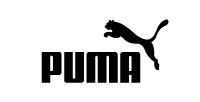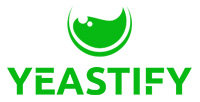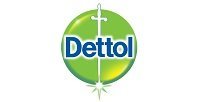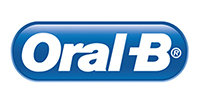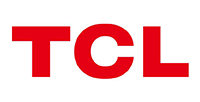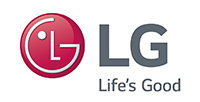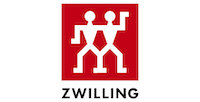Categories
-
13Landmarks
-
Supermarket
-

-
Bulk Purchase
10420
- Fruits , Vegetables & Flowers 5000
-
Chilled/ Frozen Food
18629
- Eggs 53
-
Snacks & Desserts
30791
- Beverages 34595
- Alcoholic Beverages 19085
- Noodles & Pasta 10050
- Rice & Cooking Oil 2962
-
Seasoning
16984
- Soup, Cooked Food & Preserved Food 5849
-
Canned, Dried Seafood & Tonics
9629
- Breakfast & Jam 4303
- Organic & Health Food 4857
-
Medicine
4756
- Cold, Flu & Fever Medicines 69
- Phlegm & Cough Syrup Medicines 131
- Digestive Medicines 167
- Analgesics & Anti Inflammatory Drugs 125
- Ear Nose & Throat Medicine 320
- Eye Care Products 122
- Eczema, Dermatologic & Nail 226
- Anti-Nauseants & Hangover 43
- Pain Patch & Massage Cream 403
- Baby & Kids Medicines 30
- Cold/ Hot Pats & Cooling Sheets 240
- First Aid, Bandage & Cotton 578
- Voucher & Festival Food 830
-
Tissues, Disposable & Household Products
15185
- Bathroom Tissues 783
- Boxed Facial Tissues 984
- Kitchen Towels 809
- Mini Tissues 548
- Household and Kitchen Wipe 1331
- Flushable Toilet Wet Wipe 198
- Pocketable Wet Wipe 472
- Cling Wraps/Bags & Microwave Wraps 1477
- Aluminium Foil & Non Stick Cooking Papers 813
- Disposable Tableware & Tablecloths 3618
- Storage Boxes 4124
- Rubbish Bags 902
- Household Cleaners 21834
- Personal Care 56149
- Baby Care/ Food 4579
-
Pet Care
21894
-
-
Personal Care & Health
-

-
Skincare
25151
- Personal Care 109856
-
Health
46549
-
Medicine
20494
- Cold, Flu & Fever Medicines 433
- Phlegm & Cough Syrup Medicines 681
- Digestive Medicines 532
- Analgesics & Anti Inflammatory Drugs 851
- Ear Nose & Throat Medicine 1203
- Eye Care Products 264
- Eczema, Dermatologic & Nail 1086
- Anti-Nauseants & Hangover 189
- Pain Patch & Massage Cream 1872
- Baby & Kids Medicines 265
- Cold/Hot Pats & Cooling Sheets 816
- First Aid 1734
- Makeup & Perfume 26827
- Contact Lenses & Eye Care 4150
-
-
Skincare & Makeup
- Skincare 48362
- Eye & Lip Care 8265
- Face Makeup 18754
- Eye & Lip Makeup 15896
- Makeup Remover 3212
- Suncare 5472
- Acne, Blackhead & Wart Remover 1692
- Chest & Neck Care Massage Oil 1703
- Perfume & Home Fragrance 13935
- Beauty Tool & Device 12354
- Hair Styling & Tool 17117
- Nail Care 8030
- Skincare & Makeup Set 3095
- Men's Section 2796
- Sensitive Skin 2234
- Beauty, Slimming & Fitness Supplement 1959
-
Contact Lens
2539
- Transparent Lens for Short-Sighted 903
- Transparent Lens for Long-Sighted 1
- Transparent Lens for Astigmatism 40
- Transparent Mutifocal Lens 52
- Coloured Lens for Short-Sighted 1272
- Coloured Lens for Long-Sighted 6
- Coloured Lens for Astigmatism 8
- Contact Lens Solution 77
- Contact Lens Case, Tweezer & Applicator 545
- Contact Lens Cleaning Device 39
-
Fashion
-
Pets
-
Mother & Baby
-

- Baby Formula 887
- Diapers & Pants 1656
-
Body Cleansing
9004
- Baby Shower Gel & Oil & Soap 1213
- Baby Shampoos & Conditioner 650
- Baby Toothbrush & Finger Toothbrush & Floss 922
- Baby Toothpaste & Mouthwash 446
- Baby Handwash & Soap Paper 484
- Baby Cotton Swab & Cleaning Cotton & Wipe 1010
- Baby Towel & Shampoo Hat 3414
- Baby Bathtub & Shower Chair & Shower Bed 415
- Changing Station 50
- Baby Nail Clipper & Tweezer & Polisher 299
- Baby Hair Brush 209
- Mosquito Repellent & Sunscreen 160
- Baby Laundry & Cleansing 2005
-
Bottle & Tableware & Feeding
12760
- Soother & Teether & Clip 1515
- Bib & Muslin 1917
- Bottle & Cap & Bottle Teat 1388
- Milk Powder Dispenser & Storage Bag 252
- Bottle Warmer & Thermometer Sticker 200
- Bottle Rack & Holder 178
- Cup & Kettle & Straw & Snack Container 2740
- Spoon & Fork & Chopsticks & Feeder 2013
- Bowl & Plate & Placemat 1414
- Tableware Set 785
- Lunchbox 942
- Food Grinder 136
- Breast-Feeding Essentials 2227
-
Baby Medicine & Ointment
2590
-
Baby Food & Drinks & Supplement
5420
-
Baby Toy
9615
- Soft Story Book & Audio Book 297
- Comforted Soft Toy 471
- Language Learning 529
- Grab & Grip Cognitive Learning 2679
- Sensual & Sound Effect Toy 860
- Colour & Shape Leaarning 1093
- Bathtub Toy & Swimming Equipment 1146
- Baby Rattle & Ring & Crib Toy 596
- Dough & Sketch Board & Building Block 1908
- Balls For Baby 178
- Role Play 248
- Toy Instrument 372
-
Outdoor Supplies
10450
- Stroller & Stroller Cushion 1350
- Stroller Organizer & Hook & Cover 1047
- Safety Car Seat 337
- Baby Carrier & Pouch Sling 827
- Diaper Changing Pad 1495
- Mosquito Repellent & Sunscreen 542
- Baby Mask 281
- Baby Bag & Delivery Bag 1758
- Totty tTripper 64
- Backpack & Luggage 2440
- Scooter & Tricycle For Baby & Toddler 438
- Beddings 15365
-
Home & Safety
14620
- Babies Clothes & Accessories 14385
- Baby Milestone & Gift Set 1902
- Maternity Cleansing Product & Care 1633
-
Prenatal & Postnatal
2989
- Chicken Essence & Milkfish Essence 121
- Nursing Soup & Tea & Breastfeeding Support 205
- Calcium & Folic Acid & Supplement 298
- Pregnant Milk Formula 10
- Maternity Belt 435
- Pregnant Underwear 454
- Pregnant Clothing 728
- Maternity Pillow 335
- Nursing Cover & Nursing Bra 379
- Leak-Proof Nursing Pad & Care 82
- Postpartum Crunch Pants 311
- Slimming & Fitness 140
- Child & Baby Insurance 10
-
-
Gadgets & Electronics
- Mobile Phone 773
- Tablet & E-Book Reader 573
- Headphone & Earphone 13972
- Laptop 1462
- Smart Watch & Phone Accessories 111994
-
Gaming & E-Sports
18260
- Gift Card & e-voucher 46
-
Desktop Computer & Computer Accessories
43005
- Desktop 771
- Printer & Scanner & Ink Cartridge 8191
- Desktop Monitor 1094
- Router & IP Cam 2088
- USB & SSD & Hard Disk 3611
- Keyboard & Mouse & Speaker 6671
- Charging Cable & Stand 2898
- Stylus & Drawing & Writing Pad 658
- Anti-Virus & Office Software 147
- Computer Bag & Screen Protector 5243
- Connecting Cable & Unit Convertor 9388
- PC Component 2875
- AV & Entertainment 6095
- HiFi World 7486
-
Camera & Accessories
21021
- Camera & Lens 2137
- Film Camera & Lens & Film 401
- Instant Camera & Photo Paper 437
- Drone & Action Camera 3446
- Children Camera 597
- Video Recorder & Recording Equipment 2702
- Filter & Camera Battery 1310
- Tripod & Stabilizer 2739
- Camera Bag & Strap & Protector 2363
- Flash & Reflector & Color Filter 857
- Studio Equipment 3071
- Camera Cleaning Tool 390
-
Smart Home
2431
-
Auto Supplies
47123
- Driving Recorder 1406
- Vehicle Cleaning & Care 3279
- Car Vacuum Cleaner & Waxing Machine 763
- Sponge & Brush 838
- Windshield Wiper & Car Mirror 2284
- Car Mat & Anti-Scratch Sticker 1102
- Baby Car Seat & Milk Warmer 183
- Vehicle Phone Holder & Cup Holder 4509
- Vehicle Air Purifier & Aroma 3765
- Neck Cushion & Seat Cover 5137
- Curtain & Sun Shade 1414
- Vehicle Storage 6577
-
Home Appliances
- Washer & Refrigerator & Air Conditioner 8892
- Television & Audio 5225
-
Kitchen Appliances
16941
- Range Hood 1981
- Dish Washer & Dryer & Sterilizer 671
- Induction Cooker 1678
- Microwave & Oven & Electric Steamer 1438
- Rice Cooker 825
- Air Fryer 264
- Electric Skillet & Stew Pot 1035
- Toaster & Waffle Maker & Fruit Dryer 524
- Electric Kettle & Water Dispenser 1648
- Blender & Juicer & Kitchen Machine 2019
- Ice Maker 186
- Water Purifier 2067
- Air Purifier 5057
- Fan 5153
-
Vacuum Cleaner & Electric Mop & Cleaning Robot
4399
-
Other Small Home Appliances & Accessories
26960
- Heater & Electric Hand Warmer 1876
- Humidifier & Aroma Diffuser 2052
- Iron & Garment Steamer 908
- Dehumidifier Cabinet & Electronic Watch Box 240
- Electric Door Lock 131
- Security Safe 1479
- Drill & Extension Cord & Battery 2570
- Indoor Telephone & Walkie-Talkie 427
- Digital Clock & Photo Frame 2566
- Lighting & Light Bulb & Torch 8644
- Anti-Insect Lamp 900
- Water & Decibel Monitor 1457
- Bathroom Electrical Appliances 1773
-
Health & Personal Care Appliances
8357
- Beauty Appliances 4677
- Massage & Relax 4816
-
Smart Home
5626
-
Housewares
-
Storage & Organisation
86927
- Cleaning 35522
-
Kitchenware
56442
-
Tableware
51141
-
Bathroom
52285
- Bedroom 53032
- Laundry & Accessories 19052
- Personal Care & Grooming 16987
- Home Appliances 8270
- Furniture 73250
-
Interior Decoration
77533
-
Hardware & Tools
31444
-
Stationery
27696
- Gardenware 12399
- Festive Supplies 6538
- Home & Helper Insurance 1
-
Storage & Organisation
86927
-
Sports & Travel
-
Toys & Books
- Disney 2975
- Pixar 814
- Marvel 342
- Star Wars 252
- Gaming 3306
-
Toys
39125
-
Anime & Manga & Movie Merchandising
13735
- Books 19826
- Supplementary Exercises 3416
- Textbooks 269
- Preschool 4343
- Learning Tutorial 98
-
Stationeries
58795
- Pencil & Ballpoint & Highlighter 10864
- Rubber & Correction Tape & Fluid 1723
- Blu-Tack & Tape 2834
- Colour Pencil & Crayon & Watercolor 5527
- Scissor & Box Cutter & Cutting Mat 1264
- Notebook & Calendar 3395
- Whiteboard & Blackboard 1896
- Paper Shredder & Laminator & Labeler 424
- A4 Paper & Ink & Toner 1931
- Label & Memo 1880
- Wrapping Paper 2892
- Paper Clip & Rubber Band & Ruler 1413
- Instruments & Sheet Music 3873
- Festive Decor and Essentials 10026
- Balloons & Mahjong & Party Essentials 2566
- CD & DVD & Gramophone Record 13
- Commemorative Banknote Coin Stamp 237
- Students & kids Insurance 4
-
Insurance & Finance
-
Dining & Lifestyle
-
Shopping Guide
Quick Start
Wet Market Express
Everuts Personal Shopping
ThePlace
e-Gift voucher
Citi HKTVmall Card
All Categories
Store Directory
-
About Us
Corporate Information
Career Opportunities
Merchant Recruitment
Advertise with Us
Terms and Conditions
Privacy Policy
-
Enquiries
FAQ
Shipping Information
Return & Exchange
Order Tracking
-
O2O Pick-up Points
Kowloon
New Territories
Hong Kong Island
Copyright © 2025 HKTV. All Rights Reserved.33
-
Recently Viewed Products ( / Total Pages )Clear All recordsNo Record










































